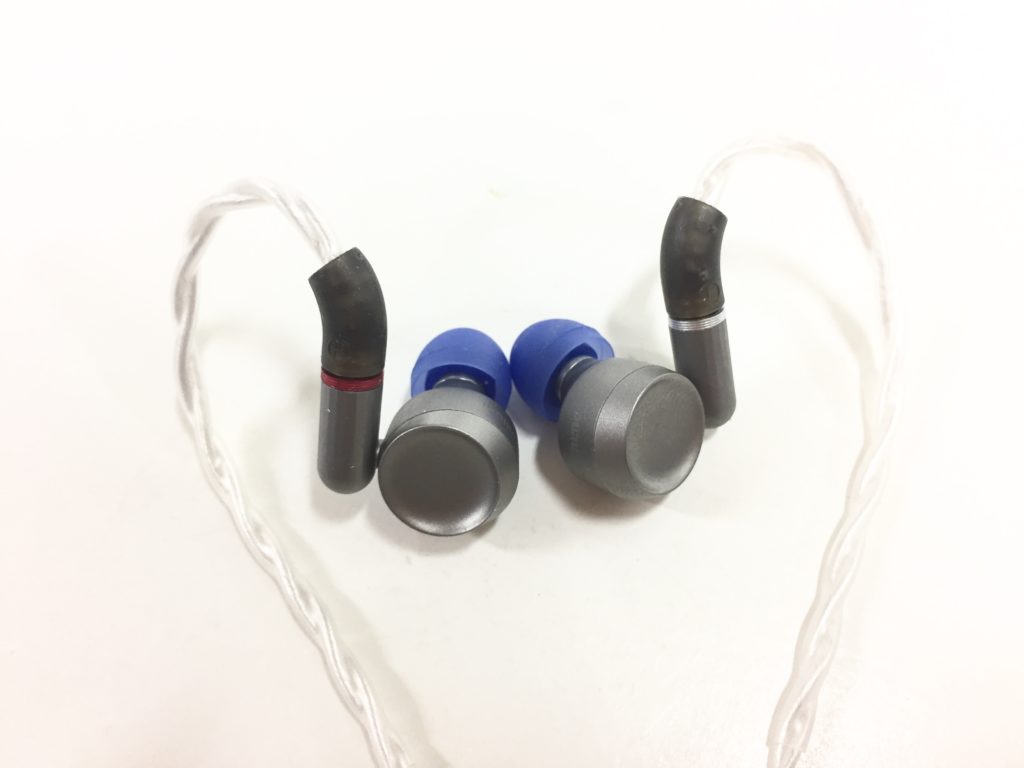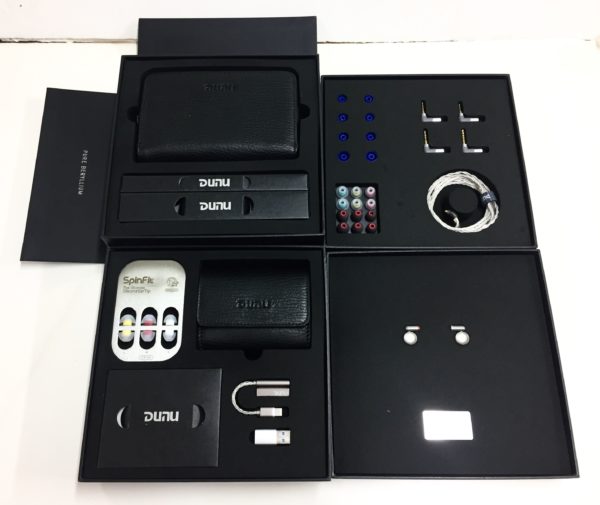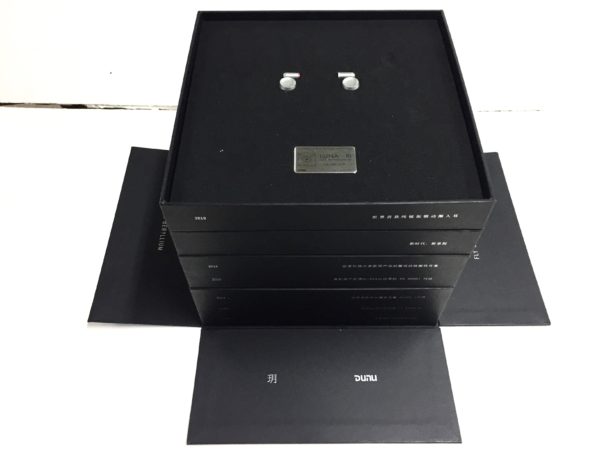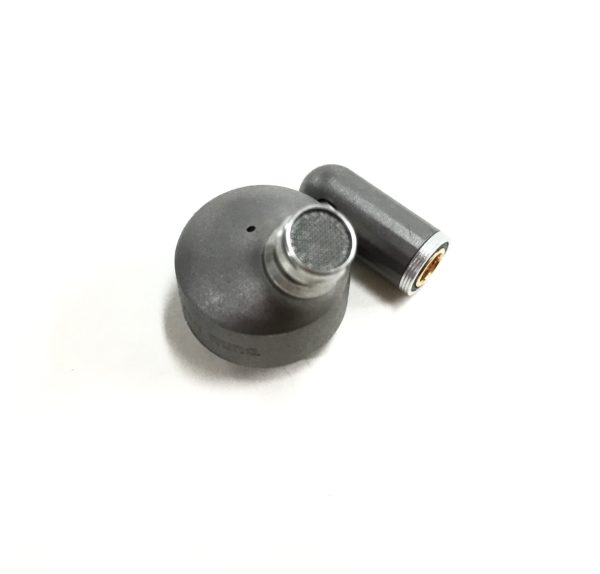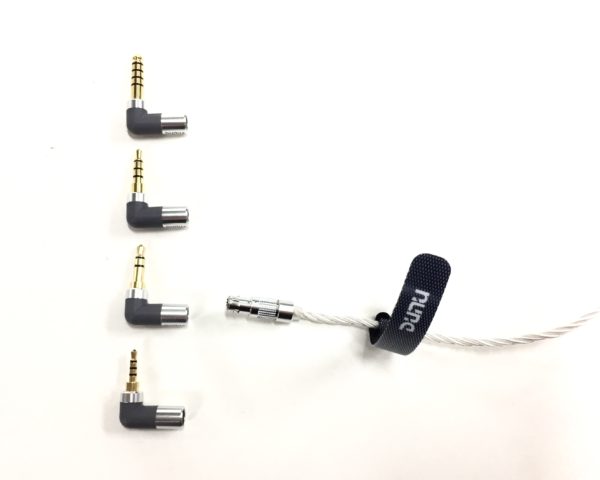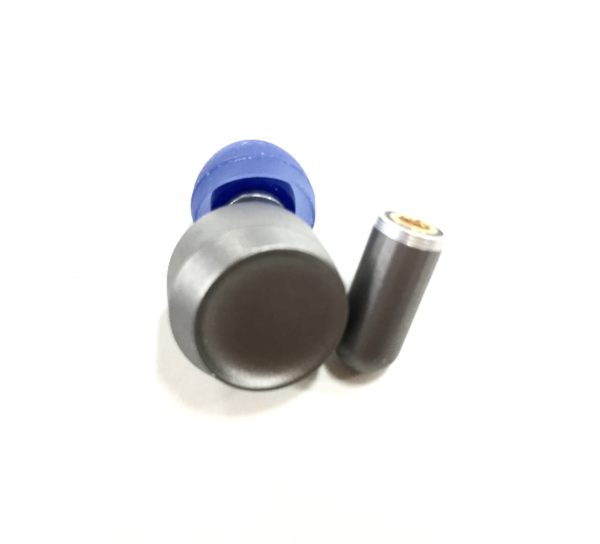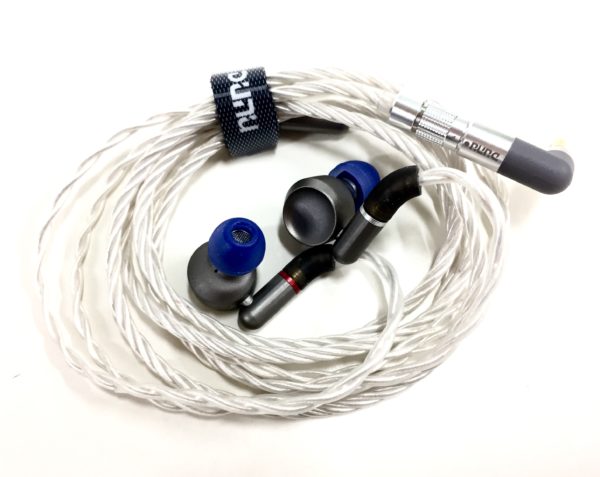These days, it seems like quite a few headphone manufacturers are transitioning from “number-based” naming systems to “themed” ones. To mixed results – while some headphone manufacturers seem to assign names somewhat more arbitrarily based on a preordained naming system (the constellations of Campfire, the Sanskrit titles of Hifiman), others seem to really stick to a theme. But I haven’t seen any that have cleaved as close to their theme as DUNU has with the new DUNU Luna. This is a really conceptually unified pair of IEMs – one where product design, marketing and engineering seem to really be working in tandem.
Of course, the moon theme isn’t what most Luna coverage has focused on. Instead, we’ve been hearing a lot about how the Luna is the first pure beryllium rolled-foil dynamic-driver IEM. There’s also the Luna’s fantastically low distortion – 0.2% THD at 1kHz, so the specs go. That’s right around HD800 level, so of course it’s fantastically good. But of course it’s possible for a pair of earphones to measure well without necessary sounding great.
Thankfully, that’s not the case with the DUNU Luna. But more on that later…
In the Box
First, we have to talk about the accessories, because there are a lot. In fact, the presentation of the DUNU Luna is probably better than any headphone I’ve seen.
Upon opening the box one is greeted with a big old black foam platform. The earphones are set in that platform such that they look kind of like dual moons rising in the inky black sky…well, maybe that’s a bit much. But they are there, and they’re presented quite elegantly. There’s also a little metal placard right below.
The rest of the box is divided up into layers like one of those multi-tier bento boxes. Each level has its own little assortment of accessories. There’s also a history of DUNU printed on the side, year by year, like a cross-section of rock sediment.
The next contains the included cable (which I’m not going to discuss to much, not being a “cable enthusiast” myself, but which does feel good in the hand), a selection of SpinFit tips, among others, and a number of adapters (3.5mm single-ended and balanced, as well as 2.5mm and 4.4mm), that you “install,” in a word, on the end of the cable.
The next level contains a few more SpinFit tips, a small wallet-sized carrying pouch, the user manual, and (amazingly enough) a USB-C DAC with a USB-A adapter. This is the first time I’ve seen a DAC included with a pair of earphones. While it provided cleaner output than my computer’s onboard audio, it was a significant step down from the Chord Mojo I used for most of my testing.
The level beyond contains a larger, purse-sized carrying bag with room for more accessories. It also contains another smaller box with a 1/4″ adapter, some foam tips, one of those airplane adapters, a cleaning brush, and a few more goodies; as well as another box that contains a strap for the purse.
In fact, the Luna contains so many accessories that just straightforwardly listing them has caused my writing software to yell at me about readability issues, claiming that this section is too long. Well, you get the picture!
Appearance, Build, and Comfort
The DUNU Luna’s design is appealingly simple: a simple, moon-shaped circle with an indented faceplate. There’s little fanfare here, but it’s quite tastefully done, and fits well with the “moon” theme. I find it hard to say anything bad to say about the Luna’s design.
The included cable seems to be built well, and the metal capsules are also quite well-built and free of any obvious deficiencies. The tips are easy to attach.
They’re comfortable, too! In my ears, they sit well, and they’re unobstructive – just little round capsules that do nothing to irritate my outer ear. Compared to the chunky capsules of Campfire products, the Luna is a refreshing change.
Overall, I think the Luna is a very thoughtfully designed product with a lot of visual, tactile, and conceptual appeal.
Sound
If you asked me to sum up the sound of the DUNU Luna in one sentence, I’d probably tell you it was impossible. Or possibly I’d tell you something vague about how it actually sounds kind of moon-like. It has a kind of airy, brisky tonality that conjures imagined images of silvery moonlight.
Of course, the headline with the Luna is its beryllium dynamic driver, and the fantastically low distortion that it provides. It’s true that the Luna sounds very clean and detailed for the most part, but at this price range, a clean, undistorted sound is practically a given. However, the Luna’s tonality isn’t really like any other IEM I’ve heard…and I kind of like it.
While the beryllium dynamic driver does gift the Luna with pretty good dynamics, it doesn’t have the sound signature of a “hard-hitting” IEM. Instead, I’d call it light, airy, cold, and exacting, with a bright top end and emphasized upper midrange. Its soundstage is also pretty good as well.
Bass
The low end of the Luna is not pronounced or overemphasized, with a slight roll-off below 40Hz, perhaps. These IEMs almost have the ability to get right down to the lower end of the audible sound spectrum, but they don’t throw it in your face when they do. Listening to Burial’s Etched Headplate, for example, the bass sits comfortably behind the mids and treble, not drawing too much attention to itself, but continuing to lend weight to the track.
Of course, a pronounced low end wouldn’t suit the Luna’s light tonality very well. I think the bass is well-integrated with the whole sound signature of the Luna. It also transitions quite naturally into the midrange. And there’s no traces of looseness here at all: the bass is very detailed. However, bassheads will probably find the Luna’s bass boring.
Mids
The DUNU Luna’s midrange has a pretty interesting sound. Overall, the tuning is broadly conventional, with a few irregularities. The lower midrange sounds pretty flat to me, without much added warmth. We may have a little bit lower midrange than the diffuse-field target would prescribe, but not by much. The overall effect is that this isn’t a very warm earphone.
Above 1kHz, there’s a pronounced dip, followed by a steady built to 4kHz. This is a slight variation on what we’re used to seeing: to me, complete tonal neutrality dictates that we’ll see a steady build from slightly below 2kHz to 4kHz. I reckon that slight dip in the mid-midrange is what’s creating the Luna’s cool and calculating tone.
The forward upper midrange means that vocals are pretty intimate and “in-head,” placed slightly forward in the stage (though not unnaturally so, in my opinion). However, it also means that they can, in rare cases, sound slightly shouty or metallic.
Resolution in the midrange is excellent, as one would expect – low-level details are rendered with ease. Because of the forward sound signature, though, they tend to sit slightly back, superseded by the musical content.
Treble
Like the moon in the night sky, the Luna is bright. Like many (most?) detail-oriented IEMs, it has a rather stiff peak right around 8kHz, and another slight emphasis at around 11kHz or so. For many people, that’ll mean detail is front and center; for others, it may be a bit harsh in the treble. I tend to be a little bit treblephobic, and at times, the 8kHz peak was a bit much for me. I also heard a little bit of tizz right around there. The roll-off above that 11kHz emphasis was also a bit steep, but I don’t really care about that sort of thing.
Overall, I’d call the Luna a bit bright for my taste, but there are plenty of people out there who will enjoy the top end here.
Soundstage
The DUNU Luna has great imaging, and it has the cabability to throw out a pretty wide soundstage. But the upper mids have the expected result of making this a rather forward-sounding pair of IEMs. That means that most of what’s going on, instrumentally and vocally, will be foregrounded, while detail will be thrown to the back of the stage.
I quite like the effect this provides – it feels like things emerge from far away, and then come toward the listener very quickly, before dissipating into empty space. It’s an effect I haven’t heard much before, except on headphones like the Audio Technica ATH-AD2000 (one of my favorites!). But while the AD2000 is aggressive and thick, the Luna is much airier, giving a spacier and less grounded sound.
Source matching
I don’t typically feel the need to include a section on source matching, but the Luna forces my hand. The bright top end here means that you essentially need a good source to smooth out the top end. And not just anything will do. For this review, I found myself using the iFi Micro iDSD Black Label, but the Chord Mojo also sounded good. My own FiiO Q1 MkII, on the other hand, sent the peaky treble too far forward in the mix, making for a fatiguing listening experience. And the iFi hip-dac ended up kind of squashing the Luna’s soundstage potential, bringing everything too far in.
Pros and Cons
Pros: Unique, clear, coherent tonality; incredible product design; loads of detail, especially in the midrange
Cons: Some tizz in treble
In Conclusion
The DUNU Luna has a lot going for it. It’s got a historically important driver, it’s well-designed, and it sounds pretty cool. While the treble sounds slightly poorly-behaved to me, this could just as easily be an artifact of my own ear canal. Overall, if spacey, airy, and forward sounds appealing to you, I’d go ahead and check out the DUNU Luna.
It’s available to order over on Audio46‘s website.
Technical Specifications
| Specification | DUNU Luna |
|---|---|
| Driver configuration | 10 mm Acoustic-Grade Pure Beryllium Rolled Foil with Polyurethane Suspension |
| Total harmonic distortion | 0.2% @ 1 kHz |
| Sensitivity | 110 dB @ 1 kHz |
| Impedance | 16 Ohm @ 1kHz |
Disclaimer: Headphone Dungeon may receive some commission for retail offers.
About Author
You may also like
-
Dunu Titan S2 Review
-
Moondrop Evo HiFi True Wireless DAC/AMP Review
-
Lenbrook Media Group Partners with HDtracks to Create Streaming Service for Music Enthusiasts and Audiophiles
-
Meze Announcing ALBA IEMs – A New Budget Friendly IEM at $159
-
Ferrum Has Announced a New Hypsos Dual-Outpt, Goldsound Wandla, and Erco GEN 2

